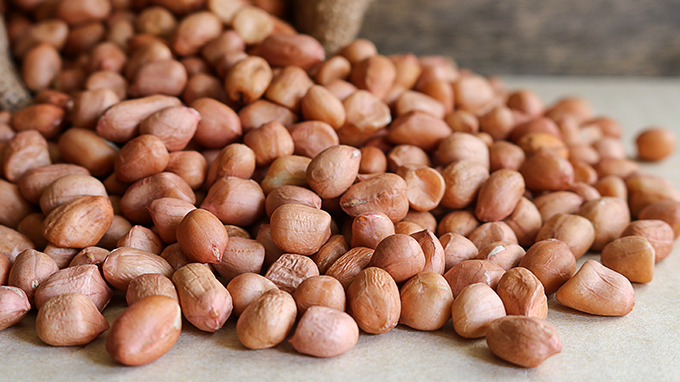New Year's News, Vitamin D
Regarding the study of basic nutrients, the biggest progress in recent years has been non-vitamin D. Vitamin D is a type of sterol (B ring is opened) compounds, there are more than 30 forms in the body. The most important of these is 1,25-(OH)2D3 (cholecalciferol).
Vitamin D is synthesized by the skin under ultraviolet rays in sunlight. This is the main source of vitamin D. Daily foods provide very little vitamin D. In addition, the main function of vitamin D is to regulate calcium metabolism. Therefore, vitamin D has the basic characteristics of hormones, or simply it is a hormone.
It has been known in the past that vitamin D is essential for bone health. It promotes calcium absorption in the intestine, calcium utilization in bones, and calcium reabsorption in the kidneys (reduced excretion), so it fully regulates calcium metabolism and has a decisive impact on bone health. Vitamin deficiency can lead to rickets (common in children under 3 years old), osteomalacia (common in maternal and elderly), osteoporosis (common in elderly and menopausal women), and hand and foot spasm (common in infants).
Researches in recent years have confirmed that in addition to vitamin D nuclear receptors in the intestine, bone and kidney, more than 20 other tissues also have vitamin D receptors, including fat, heart muscle, smooth muscle, cartilage, bone marrow, Lungs, stomach, brain, retina, uterus, ovaries, testes, breast, parotid glands, and almost all endocrine glands. This shows that vitamin D also has a certain effect on these tissue cells.
More research shows that vitamin D can also prevent diabetes, oral diseases and multiple sclerosis, and is associated with coronary heart disease, hypertension, fatty liver, fibromyalgia, rheumatoid arthritis and not Pregnancy matters. In addition, vitamin D can also enhance immunity and regulate neuromuscular function. Moreover, vitamin D is also related to the prevention of various cancers.
It is precisely because of the increasing recognition of the important role of vitamin D, especially its preventive effect on various common chronic diseases and cancer, and now the voice of increasing the recommended intake of vitamin D has become the mainstream. The recommended intake of vitamin D formulated by the Chinese Nutrition Society in 2000 is 5 micrograms (200IU) per day for ordinary adults and 10 micrograms (400IU) per day for people over 50 years old. This recommended value is currently being revised by the Chinese Nutrition Society, and it is estimated that it will eventually increase significantly (eg, double).
On the other hand, vitamin D deficiency is very common. Generally speaking, you can get what you need for a day in normal clothes (exposed arms, head, neck and face), 20-30 minutes in the sun in summer. Daily sun exposure 20~30 Minutes, it sounds not difficult to do, but if you consider that this is the average including the entire cold winter, you will find it very difficult in the northern regions. Moreover, when sunbathing, the use of parasols and sunscreen can significantly reduce vitamin D synthesis. Some studies say that the use of sunscreen can reduce the synthesis of vitamin D by 92% to 99%.
Everyday food is not a good source of vitamin D. Common cereals, vegetables, potatoes, soy products, etc. are almost free of vitamin D. Certain fish, egg yolks, and animal offal can provide very little vitamin D. In China, except for infant formula, vitamin D-fortified foods are very rare.
On June 15, 2010, the U.S. Dietary Advisory Committee noted that vitamin D in adults and children Low intake is a public health concern. Only 10% of people can consume enough vitamin D through diet. Surveys by the China Center for Disease Control and Prevention''s Nutrition and Food Safety in Shanghai, Sichuan and other places show that about 90% of children are in the interval of deficiencies, deficiencies, and severe deficiencies. Vitamin D for women The lack of more than 90%.
Sunlight exposure is the main source of vitamin D. Food is almost impossible to provide sufficient vitamin D, so for those who are not exposed to sunlight, additional vitamin D supplementation (currently the most common are various Cod liver oil preparations, namely vitamin AD capsules and compound nutritional supplements, are very necessary.
Infants, children and adolescents, as well as pregnant women should supplement vitamin D. The American Academy of Pediatrics'' November 2008 Guidelines for the Prevention and Treatment of Rickets and Vitamin D Deficiency recommends that all infants and young children (including breastfed), children, and adolescents supplement at least 400 IU of vitamin D daily shortly after birth; pregnant women during the last 3 months Supplement at least VIU 400IU vitamin D every day.
Patients with osteoporosis should be supplemented with vitamin D. The Chinese Medical Association "Guideline for the Treatment of Primary Osteoporosis 2011" pointed out that "When vitamin D is used to treat osteoporosis, the dose can be 800 to 1200 IU per day, and it can also be used in combination with other drugs."
For people over 50 years of age, it is difficult to obtain 10 micrograms (400 IU, twice that of ordinary adults) of vitamin D in daily diet. If the sunlight is not up to standard, vitamin D should also be supplemented, at least 400 IU per day . Those who reach the standard of sunlight, supplementing 400IU of vitamin D every day do not have to worry about overdose or poisoning.
Ordinary adults with insufficient sun exposure should also supplement vitamin D, 200~400IU per day. Ordinary adults who are exposed to sunlight can supplement 400 IU of vitamin D every day without worrying about overdose or poisoning.
Everyone who cares about their bone health or chronic disease prevention and vitamin D nutritional status can test 25-(OH)D3 to know whether they lack vitamin D nutrition.
Related Articles

- Can I drink tea for pregnancy
- Pregnancy is the most important event in a woman’s life. How to get pregnant smoothly and how to conceive a healthy baby is a problem that every couple and every family are very concerned a
- 2020-08-03

- What are the nutritional characteristics of nuts
- Nuts are one of the small foods that people like very much nowadays. They are rich in nutrients, high in protein, oil, minerals, and vitamins. They have excellent effects on human growth an
- 2020-08-03

- Celery leaves
- It is a habit of many people to eat celery and not to eat leaves. I think the leaves are just scraps. In fact, it is just wrong here. Almost all vegetables with leaves have a common featur
- 2020-08-03

- Is a cookie a nutritious food
- Biscuit is the most common snack food, but if it is said that biscuit is not nutritious, it seems to have aggrieved it. Every food has nutrients, even instant noodles or biscuits.
- 2020-08-03

- How to make a quick nutritious breakfast
- People often say that eating like an emperor for breakfast, like an aristocrat for lunch, and like a beggar for dinner will be healthier. How can I prepare a nutritious breakfast in 15 min
- 2020-08-03

- Can gout drink alcohol?
- Patients with gout should drink more water than wine. Gout diet is stricter, and even exceeds the dietary contraindications of diabetes, hypertension and high blood fat. Strict dietary tabo
- 2020-08-03
